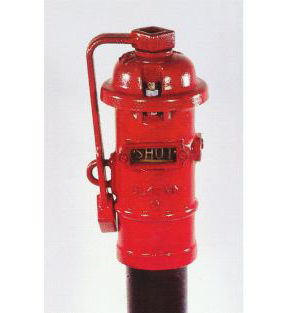An ionisation smoke detector is a device that detects smoke.
IONIZATION SMOKE DETECTOR OPERATION
A typical ionization smoke detector typically consists of two plates in close proximity to each other and a radioactive source (typically, this consists of a very small quantity of radioactive element Americium). Both plates are connected with a battery, which applies voltage to the plates. Consequently, one plate is charged positively (+) and the other one negatively (-). The radioactive source constantly releases alpha particles that knock off the electrons from the surrounding air atoms, thus ionizing the nitrogen and oxygen atoms within the detector chamber. The positively-charged ions are attracted to the negative plate whereas the negatively-charged iones are attracted to the positive plate, thus creating a small, continuous electric current. This small ionization current that can be easily measured by electronic circuitry which is connected to the plates.
So how do ionisation smoke detertors exactly work in presence of smoke? When smoke molecules enter the ionization chamber, the smoke particles attach to the ions and neutralize them. Consequently, the total number of ionized particles in the chamber is reduced. This reduction yields a decrease in the chamber current that is sensed by the electronic circuitry. The drop of current between the plates triggers an alarm. An externally visible red LED lights up when the detector alarm state is energised.
Picture 1 - Ionisation smoke detectors schematic
Charasteristics of ionisation smoke detectors
Ionisation detectors respond more quickly to flaming fires with smaller combustion particles, due to their sensitivity to minute smoke particles. They are more prone to false alarms compared to photoelectric detectors, which in their turn respond more quickly to smoldering fires. Ionisation detectors are usually less costly compared to photoelectric detectors.
Ionisation detectors have a degree of built-in security which is not found at photoelectric detectors. More specifically, when the battery starts to weaken in an ionisation detector, the ion current falls and the alarm sounds, warning the user to change the battery before the detector is rendered useless.
Realated Standards and Codes
More information on the design, use and installation of smoke detectors can be found at the following standards:
• NFPA 70, 72, 90, 92, 101,
• European standards EN54





